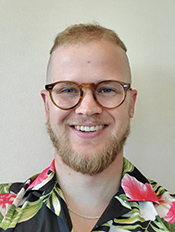
Research Interests
The term Common Era refers to the last ~2000 years, but it also has a scientific connotation, as this is the era common to paleoclimate reconstructions, observational data, and simulations from state-of-the-art climate models. I leverage these disparate sources of climate information to better understand variability on decadal and longer timescales—things like “megadroughts” over southwestern North America and trends in tropical Pacific sea surface temperatures. My work typically involves the development and implementation of novel statistical methods, including machine learning, as well as the use of climate modelling—particularly with the National Center for Atmospheric Research models.
Potential Project
- Using machine learning to better understand the characteristics of heat waves and droughts in both space and time.
- Analyzing historical trends in the tropical Pacific Ocean, a critical region for Hawaiian (and global) climate with an uncertain response to human-driven climate change.
|

Research Focus
My research interests and expertise include hydrogeophysics (imaging and understanding water in the subsurface: e.g. groundwater resources, flow paths, salt/fresh water interactions; geothermal resources; etc.), imaging, inverse problems, numerical modeling, multi-geophysical methods (e.g. active and passive seismics, electromagnetics, gravity), and coupled seismo-electromagnetic phenomena. In my research group, I always aim to combine theoretical and algorithmic development with field data and/or laboratory data. We have a wide-range of cutting-edge land geophysical equipment available, including seismic nodes (1C and 3C), nodal-based electrical resistivity tomography/induced polarization systems, magnetotellurics, self-potential systems, seismic sources, and gravity.
Potential Projects
- Hydrogeophysical field experience: learning data acquisition, processing, imaging, inversion, and interpretation with one or a variety of geophysical methods, to study groundwater distribution, flow, and hydrogeologic properties at a Hawaiian field location
- Theoretical development: develop improved physics descriptions of geophysical phenomena of interest
- Algorithmic / software development: e.g. novel advanced wave/field propagation modeling software in porous media; imaging and/or single or joint-inversion algorithms including uncertainty quantification for a variety of geophysical data types (seismic, EM, gravity). This can also include synthetic modeling studies with already available software.
|
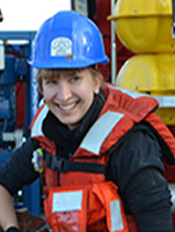
Research Interests
Currently, one of my primary areas of research is exploring techniques to seismically image the mid-to-deep crustal magmatic structure beneath volcanoes. This has traditionally been a difficult region to constrain with geophysical and geochemical techniques, and represents a missing piece of our understanding of global volcanic processes. More complete constraints on the deeper crustal system beneath volcanoes can help to inform models of magma transport and recharge in eruptive cycles as well as help understand links with tectonic environment. I typically work with students that have a strong interest in physics, math, and computer programming, and students can expect to learn about seismic data availability and processing, seismic crustal imaging techniques, an overview of tectonic and volcanic processes, and make use of MATLAB programming.
Potential Project
Receiver function studies are an infrequently used technique to image the deep crustal structure beneath volcanoes, despite some successes. The intern will investigate existing data at volcanoes globally to assess the ability of local monitoring networks to be used for deep crustal imaging targets. Depending on the outcome and student interests, possible directions could include detailed seismic imaging at a single volcanic system, comparison of first order structures amongst or between different tectonic settings (i.e. rift, arc, hot spot), or assessment of imaging quality based on network configuration.
|
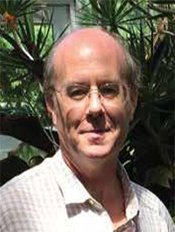
Research Interests
Our group uses direct measurements of ocean properties, such as temperature, sea level, waves, etc. to better understand ocean dynamics. This research has two broad foci: one involves the role of the ocean in the Earth's climate, the other is directed at providing data and products to the public.
hrough collaborations with the Oceanography Department, Ocean Resources Engineering and the Center for Microbial Oceanography, a series of measurements are routinely collected at Station ALOHA, a region roughly 100 miles north of Oahu. Here we maintain a sea-floor observatory called ACO. This provides real-time information about the deep ocean, including video, sounds, and various physical properties. We also conduct monthly cruises to Station ALOHA as part of the Hawaii Ocean Time-series (HOT) program. During these 5-day expeditions, a wide range of measurements are made, and various samples are taken and then processed back on campus. Finally, the third component at Station ALOHA is a “ocean reference site”, a surface mooring (buoy), that measures atmospheric conditions (wind speed, rainfall, etc.) and subsurface ocean quantities. All of these measurements provide us with relatively long-term time-series that can provide insights to how the ocean environment is changing, and the analyses may help better understand climate change.
A second area where ocean observations are collected and used is within a program called the Pacific Islands Ocean Observing System (PacIOOS). This effort is aimed at providing real-time and forecast information to a wide range of ocean users, including coastal managers, planners, tourists, surfers, and so on. PacIOOS maintains observations in all the American Affiliated Pacific islands including Hawai‘i. We have a wide array of coastal measurements and numerical models, and then try to provide these data via web-based services.
Potential Project
- Investigate time-series of measured temperature and salinity at Station ALOHA to try and detect long-term changes in ocean conditions. Using the co-located mooring, try and attribute these changes to local air-sea forcing.
- Process deep-sea measurements of passive acoustics (underwater sounds) to help identify various signals of interest (e.g., marine mammal sounds)
- Help develop end-user products based on observations/data from the coastal region. These could include map-based presentations of inundation events, forecast of high surf or other extreme events, automatic alerts when near-shore water quality become degraded, etc. For this project, we encourage applications from students with experience in Liunx-based scripting, Python, javascript, GIS-based tools, and webpage design.
|
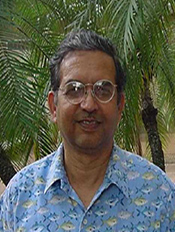
Research Interests
My research interests are in the fields of micro- and remote Raman spectroscopy of synthetic and natural materials including silicate glasses, minerals and biogenic minerals, and ices relevant to planetary exploration of the Moon, Mars, Venus and Europa. My Laboratory also have developed instrumentation for standoff Raman, fluorescence and laser-induced breakdown spectroscopy, and more recently underwater standoff Raman system. Details are available here.
Potential Project
- Micro-Raman study of the structure of volcanic glasses and synthetic silicate glasses and melts for understanding volcanic processes
- Micro-Raman and standoff Raman investigation of coral samples dredged from various depth in the ocean to learn about effect of climate changes on coral reefs
|

Research Focus
I develop intelligent robots that autonomously navigate and probe scientific hotbeds in extreme terrains on Earth, like glaciers, hydrothermal vents, and underwater volcanoes, which offer analogues to space environments and independently have scientific value. The ultimate goal of my research is to create algorithms that completely automate the planetary surface exploration process. I typically work with students who have a strong foundation in physics, math, computer programming, and mechanical engineering. I expect my students to have a passion in interfacing with scientists, delving into topics like terramechanics modeling, control policy, and machine learning methods, and building robots.
Potential Projects (TBA)
- Develop a machine learning decision maker that tells the robot the next location to sample based upon science measurements at current location. Then generate way-points to get from the current to the next location on extreme terrain
- Design and fabricate an extreme terrain wheeled rover with the option of remote control or autonomous control. Demonstrate traversal of extreme terrain
- Create a computer simulation that simulates lunar or Martian rover dynamics and relates terramechanical parameter to field sites on Hawai‘i
|
| |
Team Mentors: Alyssa Anderson and Sarah Fagents
|


Research Focus
We investigate the mechanisms of formation of volcanic features using high resolution imagery data, computer modeling, and field studies. Monitoring at Kīlauea volcano during the 2018 eruption has provided excellent datasets that offer opportunities to study Hawaiian volcanoes.
Potential Projects
- Analysis of aerial videos and images of the active lava flows from the 2018 Kīlauea eruption to study lava flow dynamics and evolution
- Modeling of volcanic processes, especially Hawaiian volcano dynamics
|
| |
Team Mentors: Paul Wessel and Mike Garcia
|
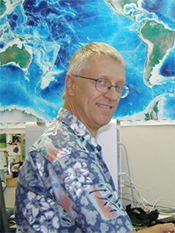
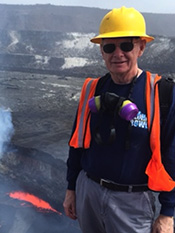
Research Focus (Garcia)
Hawaiian volcanism is central theme of my research. Rocks are the tools I use to understand the internal processes within these volcanoes. Currently, I am working on the extinct Hawaiian volcanoes to better understand the dynamics of the Hawaiian mantle plume.
Research Focus (Wessel)
Plate tectonics is the central paradigm of geology and the foundation for my research. I use a variety of geologic and geophysical data, software engineering, and data analysis and modeling to decipher past plate motions, with emphasis on the large Pacific plate.
Potential Projects
Temporal evolution in the magmatic flux of the Hawaiian mantle plume. The lucky student will determine the volume of all the volcanoes in the Hawaiian-Emperor Chain south of the Bend using existing software and new seafloor maps that we have recently compiled. The project will for the first time establish the variation in the magmatic output of the Hawaiian mantle plume. These results will be used to interpret deep mantle processes, the thermal evolution of the hotspot, and as constraints on lithospheric deformation beneath the chain.
|
| |
Team Mentors: Jasper Konter and Aaron Pietruszka
|
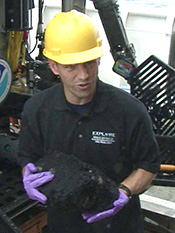
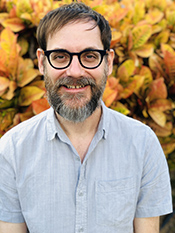
Research Focus
Our research interests are in mantle geochemistry, and magmatic processes that shape oceanic volcanoes. The majority of our work focuses on the use of radiogenic (Pb, Sr, Nd, Hf) and stable (Fe) isotopes,as well as major and trace element abundances to look at the sources and processes that form volcanic rocks. In particular, we work on volcanic chains that occur in the middle of the tectonic plates (so-called hotspots), studying how the volcanoes are constructed, how they relate to the tectonic plates, and how they relate to the world-famous example of the Hawaiian Islands.
Potential Projects
- Composition of one of the least studied Hawaiian volcanoes, Kaho‘olawe, using some of the freshest samples available, recovered during the 2019 REU cruise
- Isotopic composition of Samoan late shield subaerial volcanism
- Compositional gradients across Hawaiian rocks or minerals using laser induced breakdown spectroscopy (LIBS)
|
| |
Team Mentors: Chris Shuler and Henrietta Dulai
|
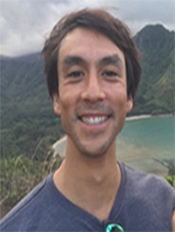
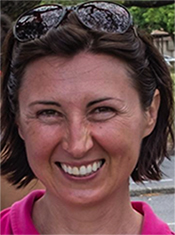
Research Focus
Hawaiian aquifers have great influence on the water quality of streams and the coastal ocean. Groundwater feeds streams and also discharges to the coastal ocean in the form of submarine groundwater discharge (SGD), thereby strongly influencing the water quality in near-shore waters. We are interested in natural and anthropogenic effects including sea-level rise, climate change, and pollution on SGD and coastal ecosystems. For example, one common problem on Pacific Islands is a high density of cesspools along the shoreline and streams, which leak wastewater into the groundwater aquifer. What many people don’t realize when taking medication is that drugs get excreted and end up in our wastewater and leak into streams, groundwater, and reefs. These medications affect aquatic organisms and may end up in our drinking water. Studies in Hawai‘i have shown the presence of pharmaceuticals in the coastal ocean and streams but more studies are needed to better understand the distribution of these constituents in the wild.
Potential Projects
- Past studies have recognized a pollution problem in Maunalua bay, for example they showed that coastal submarine springs have nitrogen of wastewater origin and that pharmaceuticals are present in the springs, making a clear connection to wastewater. Hypothesis: If coastal springs are affected by wastewater and have pharmaceuticals then streams will as well since they are groundwater fed. Data collection and analysis objectives of this project will be to find the gaining reaches of the streams using radon, collect contaminant of emerging concern (CEC) samples in the stream and analyze them using ELISA, determine stream discharge, calculate CEC fluxes to the bay, and map CEC distribution.
- Manoa, Palolo and Makiki Streams - are surrounded by hundreds of cesspools that leak wastewater into groundwater which feeds the streams. Previous research has shown the presence of pharmaceuticals in all streams providing proof of cesspool connection. Data collection and analysis objectives will be to find the gaining reaches of the streams using radon, collect CEC samples in the stream and analyze them using ELISA, determine stream discharge, calculate daily CEC fluxes in the stream, and map CEC distribution.
|














